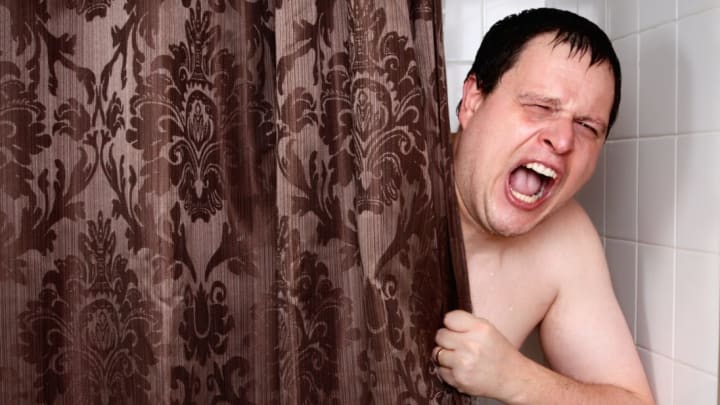Why Does My Shower Curtain Liner Attack Me?
By Jake Rossen

For most of us, showers are a time to block out external stimuli and enjoy a moment to ourselves. The blissful monotony can often lead to creative inspiration or new ideas. Celebrated screenwriter Aaron Sorkin once said he takes up to six showers a day to help unblock his mind and resolve story problems.
But not all showers can make us part of the wealthy Hollywood elite. Some showers can become exercises in dread and frustration. We’re referring to the persistent attack of the shower curtain liner.
Liners have a tendency to billow inward during showers, enveloping themselves around our calves and forcing us to swat them away. As problems, go, it’s fairly innocuous. But that doesn’t mean science hasn’t tried to understand the physics behind the phenomenon.
Back in 1938, Popular Science theorized that liners were behaving badly as a result of air currents. When hot air from the warm water rises, cold air around the tub seeks to replace it, causing the liner—which is in between—to grow agitated. This explanation seemed to satisfy people for a while, until someone pointed out that the liners tend to move even during a cold shower.
Others believed the liner was acting as a result of Bernoulli's principle, which states that air pressure around fluid decreases when the fluid is moving quickly. With a difference in air pressure inside and outside the tub, the liner will move.
In 2001, someone finally had the means and motivation to examine this theory more closely. David Schmidt, an assistant professor at the University of Massachusetts Amherst, used computer software developed to examine fluid spray to assist in diesel and aircraft engines to put Bernoulli's theory to the test. This being 2001, it took his home PC two weeks to run the simulation, which Schmidt programmed to replicate a typical shower (rod, curtain, liner, shower head).
Schmidt found that the shower spray created a vortex with a low-pressure region—a little like the center of a cyclone. That region is what “sucks” the liner inward. Despite the relative calm of a shower, the simulation indicated that you’re basically in the eye of a very low-level storm.
For more answers, Schmidt would probably have to consider overseeing a real-world model, but he said he doesn’t have the time or inclination to take the whole shower cyclone science thing to the next level.
That’s not quite the end of the story, though. In 2007, physics author Peter Eastwell tinkered with a shower set-up and noted that the cyclone effect was more pronounced in hotter than cooler water, and that factors like the distance of the liner from the spray affected the liner’s movement.
Clearly, more work needs to be done on this important issue. Until then, using a heavier liner or attaching weights to the bottom can prevent billowing. Alternately, you could just install a shower door. Aaron Sorkin probably has one.
Have you got a Big Question you'd like us to answer? If so, let us know by emailing us at bigquestions@mentalfloss.com.